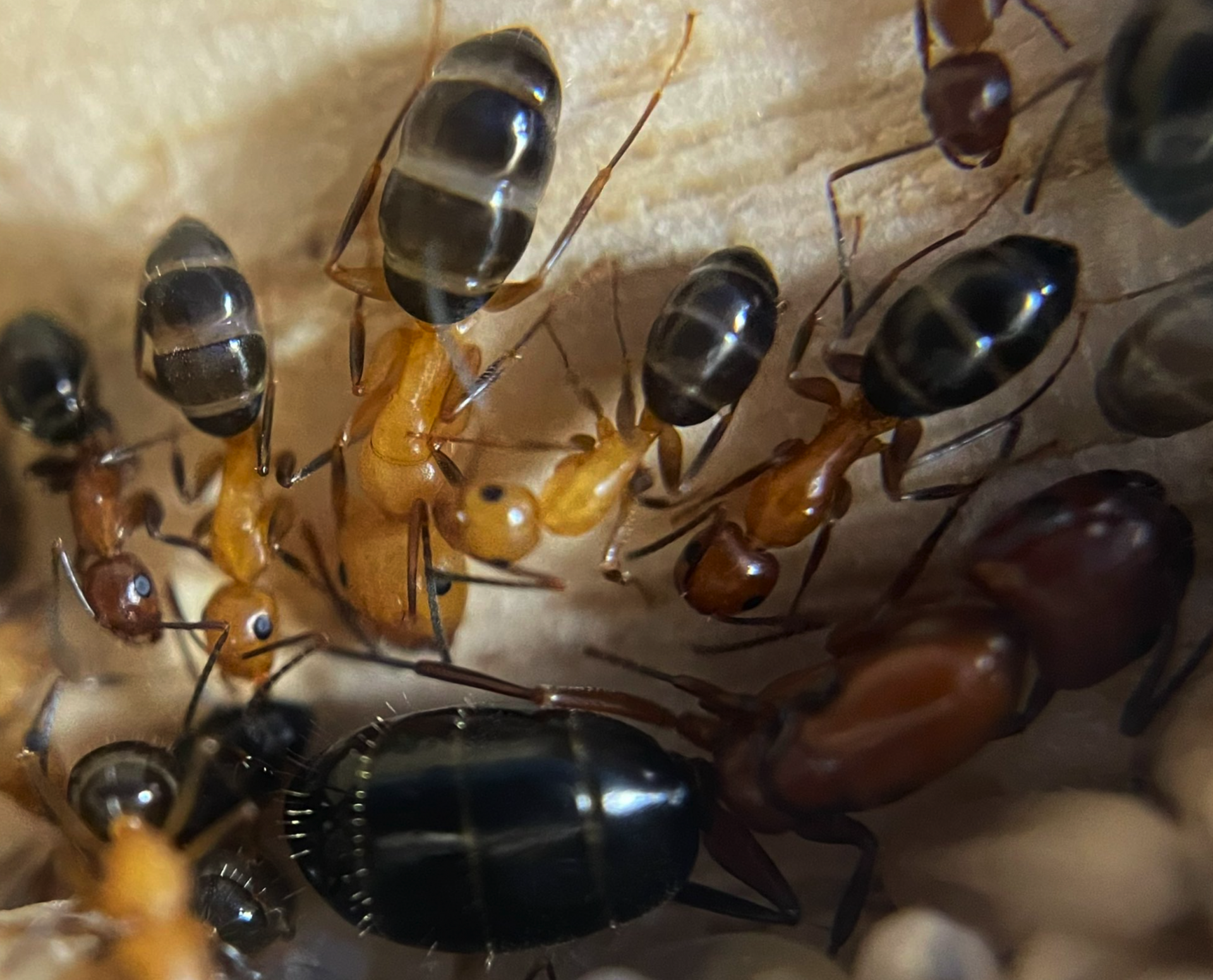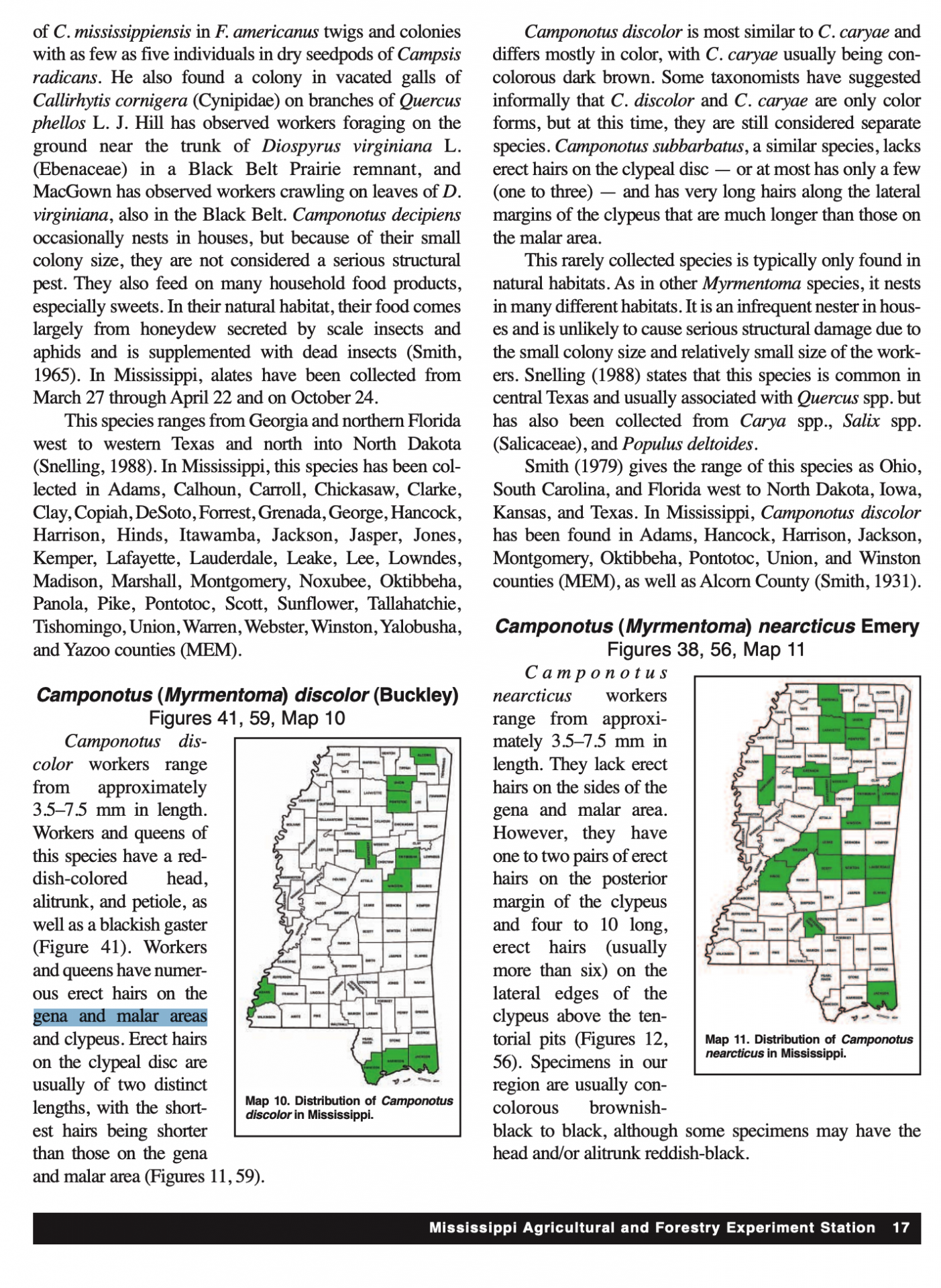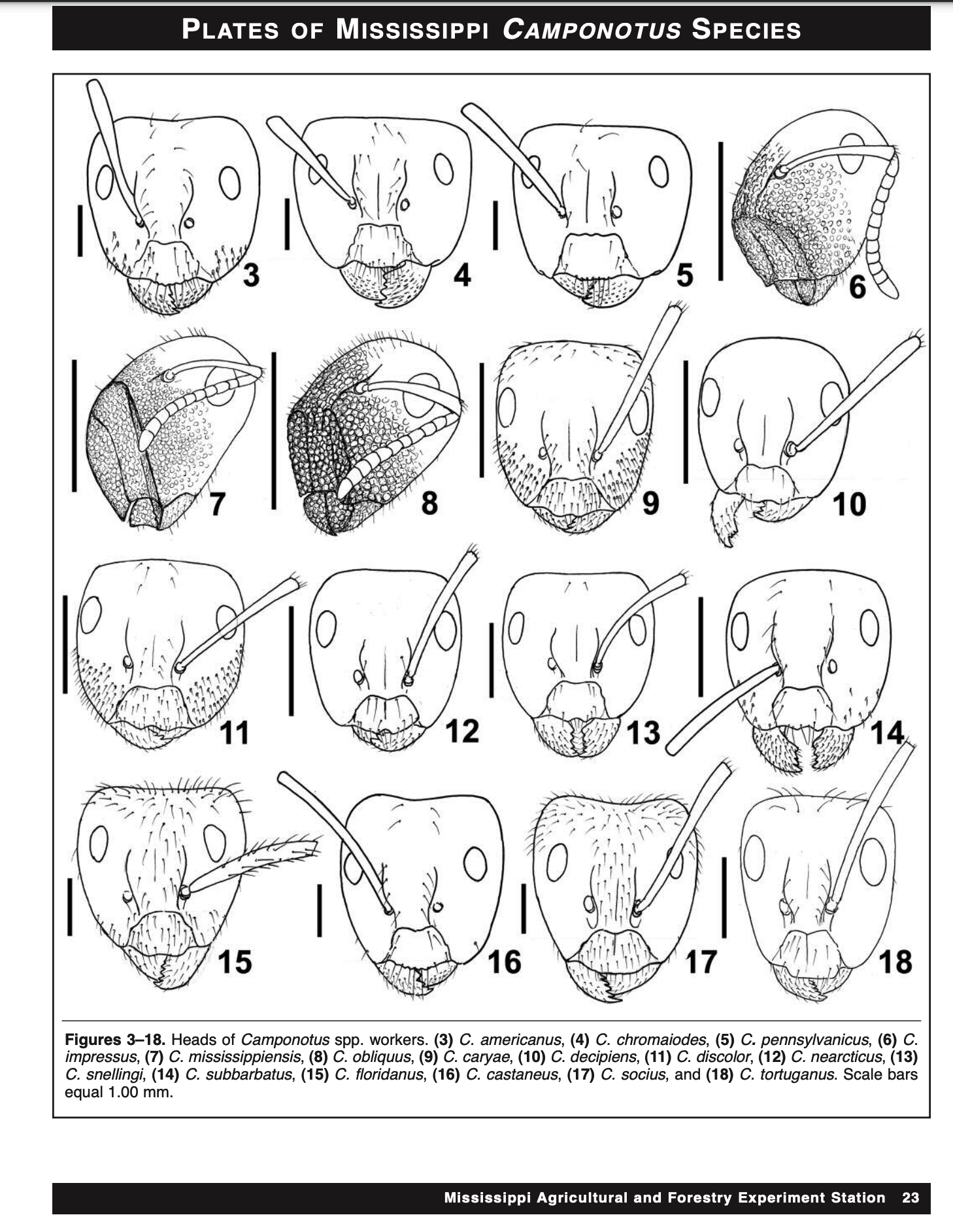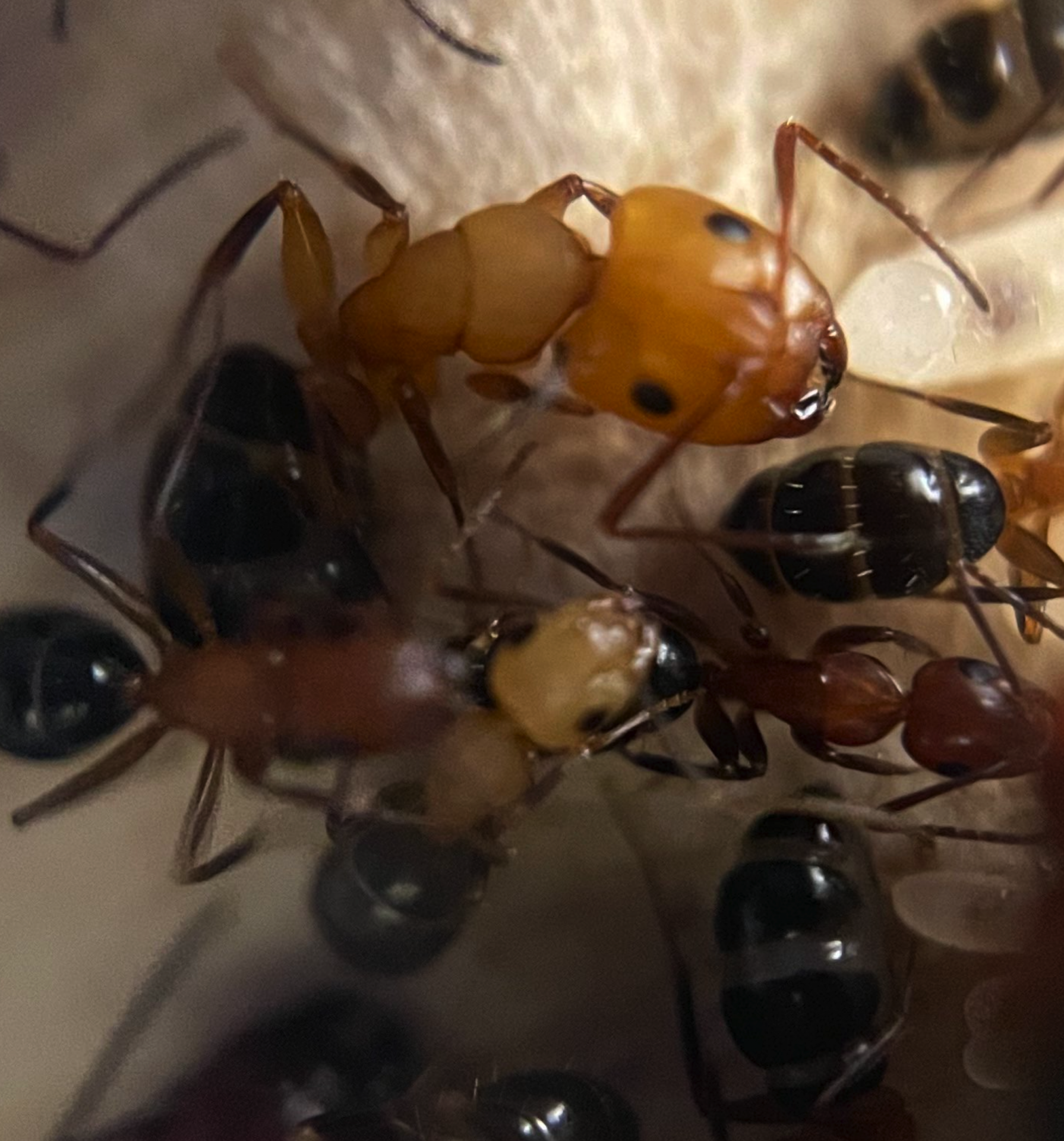I got this colony from tar heel ants, and he knows his stuff, so I'm 98 percent certain they are camponotus discolor as advertised... and yet. I see photos online that confuse me all the time!
So, I looked up the description.
Wow, I thought it would mention decipiens as the ant discolor is often confused with, but here is a new ant... camponotus caryae. In any case it seems that I need to look at the little face hairs of the ant.
caryae has hairs all over the face except the forhead.
decipiens has hair on the mandibles and above them on the upper lip (on the 'clypeus') The descriptions says "one or two pairs of hair on the posterior margin of the clypeus"
discolor has basically a beard, hairs the same as decipiens... but more and also on the cheeks.
It's really hard to see their face hairs! It's hard to get a photograph... but looking at them with my magnifying glass I just don't see the "cheek hairs" They have hairs on the top of their head, on their mandibles, on the clypeus (but IDK if it's exactly "one or two pairs") and that is all.
If one of them dies and I can find the body I'll update this post with some microscopy.
Can someone help me?
Edited by futurebird, June 29 2021 - 7:22 AM.


























